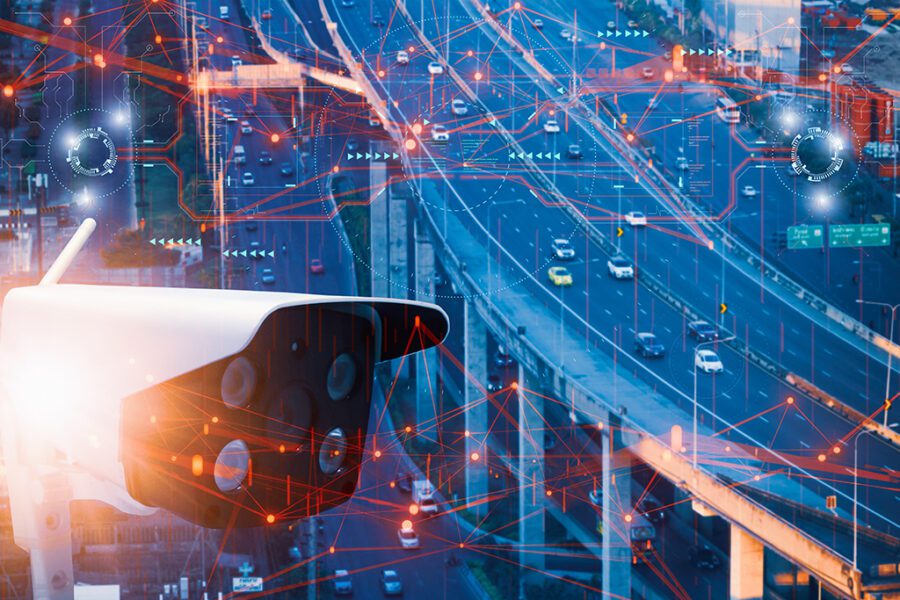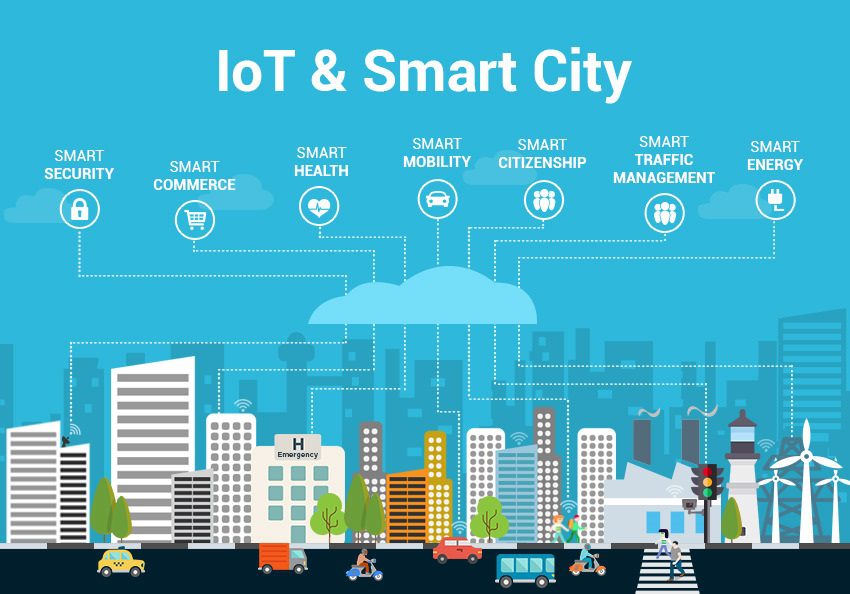
The urban population across the world is increasing rapidly, leading to several challenges such as sanitation, traffic congestion, environmental imbalance, pollution, and others. Rapid urbanization has led to the migration of the rural population to urban areas, which has made the daily routine of the urban population convenient and comfortable.
Thus, the need to incorporate IoT in smart cities has emerged, which has shifted municipalities’ attention towards using technology in smart cities to enhance the lives of the urban population. These aspects have significantly contributed to the growth of IoT in the smart cities market.
The optimal approach to implementing smart city solutions will enable a conducive environment for the urban populace. Furthermore, the traffic issues can be resolved easily and the public’s safety can also be ensured. These features of IoT in smart cities may augment market growth.
IoT-Based Traffic Systems are Essential Components of Smart Cities

The safety of the individuals commuting from one destination to another must be ensured. Thus, to accomplish this, government bodies have focused their attention on developing smart traffic solutions. Smart traffic solutions fetch GPS data; thus, the location and speed of the vehicle can be accessed from any location. The cloud-based management platforms can predict traffic flow and measure congestion. Additionally, they can monitor and run the signals automatically to avoid traffic jams and ensure commuters’ safety. The smart control system can measure real-time traffic conditions and control traffic lights accordingly. Various apps have been developed to make users aware of the traffic situation. All these developments in smart cities due to the incorporation of IoT can bring a major shift in the market scenario.
Smart parking solutions play a crucial role in helping consumers find an appropriate space for parking digitally in the hustle and bustle of overcrowded cities. The GPS data enables the user to track the available parking space, making it easy and convenient for them to find proper parking spaces. The information of the closest parking spot received through notifications through the app helps the user spot the parking space without hassles and saves their time.
Public Transport to Become More Efficient and Safer Due to IoT in Smart Cities
The public transport system has become safer and more convenient due to the IoT in smart cities, The IoT sensors provide information to the users based on their traveling patterns and make it easy to find the best possible travel options at a click. Furthermore, it is safe and convenient as it carries out various functions such as ticket booking, travel time, pick and drop facilities available at that time, and many other things. These aspects have created immense growth opportunities for the IoT in smart cities.
The information related to delays in trains and the availability of seats can be found easily through the apps, which have made travel easy and quick for commuters. Furthermore, cancellations and refunds are also possible without hassles. These features have made the IoT in smart cities popular among the global population.
Introduction of advanced technologies and it inclusion is most of the sectors has grown at a significant rate in the past couple of years. Customers nowadays prefer using advanced technologies, which is acting as a crucial growth driver in this market. Governments in both developed and developing regions are now taking deliberate to build smart cities thus, growing the demand significantly in this market. Moreover, implementation of IoT services helps in providing better and advanced security solutions and monitor assets from remote location without any physical presence.
IoT Street Lights Make Maintenance More Cost Effective
The IoT-based smart cities have enhanced their lighting systems through the maintenance and control of street lamps in a cost-effective way. In addition, it provides better services through IoT integration by analyzing the lighting schedule and managing the lights as per the requirement. Automating lighting systems through IoT in smart cities may open new growth avenues for the IoT in the global smart cities market.
